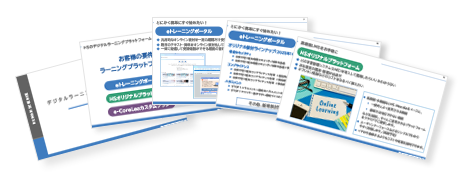2021.02.19
Q&A from the seminar "Case Studies of Using Articulate Storyline in the Medical Field - Methods and Challenges of Editing and Translating e-Learning Content"
On January 20, 2021 (Wednesday), we held a webinar on the theme "Case Studies of Using Articulate Storyline in the Medical Field - Methods and Challenges of Editing and Translating e-Learning Content," and many people participated.
Here, we will introduce the questions and answers received during the seminar.

Q Is there a criterion for deciding whether to use Storyline or Rise when editing from PowerPoint materials?
A When using PowerPoint materials, it is often recommended to use Storyline or Studio.
In the case of a major equipment manufacturer, the transition to Rise was a means to expand its usage beyond traditional purposes and learning environments.
Since it is web-based content, it has features such as being optimized for smartphones (the text size does not become smaller).
https://articulate.com/360/rise
Q This is not a localization issue, but I often find that when I input Japanese into Storyline, the line breaks become misaligned. Is there any solution for this?
A At this time, measures such as line breaks with [Enter] and line breaks without changing paragraphs with [Shift]+[Enter] are necessary. There is a possibility that improvements will be made in future updates.
Q Please tell me how to correct any typographical errors found in the translation.
A The method will change depending on the timing of typographical errors.
・Timing of the translation manuscript:
It can be corrected in the Word document and recorded in the translation support tool, which will be reflected in subsequent content.
・Timing after content creation:
Re-editing will be done on editing files such as Storyline. Investigation is necessary, including the possibility of affecting other courses.
Q When translating Japanese content into English, should the font of the text within the content be changed from a Japanese font to a Western font?
A If there are no error messages or discomfort in the edited file or the exported content, no changes are necessary. However, in practice, one of the Japanese fonts is reflected, and for management and aesthetic reasons, it is recommended to replace it with any Western font. Additionally, in Storyline, you can use the [Find/Replace] function to [Replace fonts] (font replacement) (adjustments may be needed after replacement).
Q I think this is a common request, but I often use the import feature from PowerPoint to Storyline. Do you know if there are plans to introduce the export feature from Storyline to PowerPoint?
A At this point, the prospects for development are slim.
Q It may be due to the PC environment, but I cannot input Japanese directly onto the slide in Storyline360; instead, a window appears where I input Japanese.
A Please understand that this is a specification. Previously, it was in a format that could be directly entered, but there were issues such as confirmation occurring during input, which has been improved. Input in a separate window is a method widely adopted in similar tools other than Storyline.
Q When creating the English version of the Storyline content that has already been created in Japanese, do you directly edit each Japanese text part and replace it with English?
A If the translator and editor are the same person, it may be possible to directly replace text on the Storyline.
However, in the following cases, we recommend using the Translation feature in Storyline (FILE→Translation) to translate using Word documents, etc.
・When translation and editing are done by different members
・When using translation support tools to prevent inconsistencies in notation (this is mandatory in this case)
・When the same or similar phrases are repeated, such as in e-learning slides/narration/quizzes
・When there is a possibility that similar phrases will appear in multiple courses or materials created in the future

Author:
Keigo Tachino
Education Solutions Department Consulting Unit
・Experience as a training instructor, web designer, etc.
・Engaged in instructional design, e-learning development, etc.
・Learning Designer (eLC certified)
・ATD International Professional Member
Contact Information:
Phone Number: 03-5321-3111
hsweb_inquiry@science.co.jp












